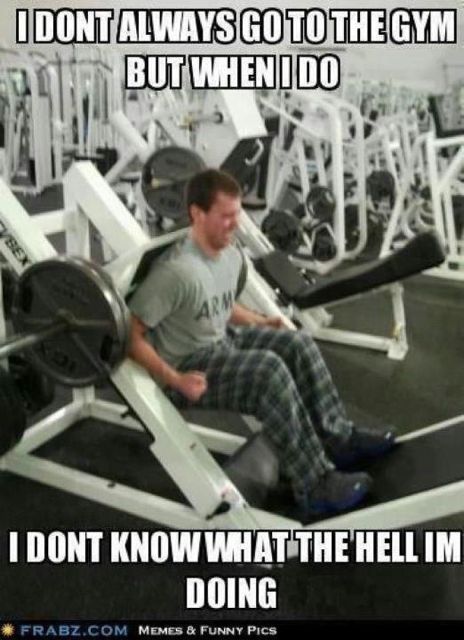
19 Sep Biggest Flaws in Youth Strength and Conditioning Programs
The world of youth sports is getting more and more competitive every day, and parents and athletes alike are looking for a competitive advantage. The business of youth strength and conditioning programs lends itself to a massive amount of ambiguity and confusion; people don?t know where to start or what to look for! The rest of this series will deal with what TO DO, but this article will mostly focus on most common flaws we see in today?s programs.

- No Assessments:
Not many youth strength and conditioning programs begin with a useful assessment of an athlete?s movement baseline. Implementing a useful system such the Functional Movement Screen (FMS) allows trainers and coaches to see where each individual has movement impairments. With this knowledge, skilled practitioners can red light certain lifts and movements that can just feed existing imbalances. What does that mean in English? Let?s say a baseball player has impaired shoulder mobility, like myself when I was pitching, doing overhead pushing and pulling (pull-ups, pull-downs, push presses, etc.) will just continue to feed poor shoulder mobility. In time, this may result in an injury, which is exactly what happened to me. Knowing what I do now, screening for movement impairment syndromes allows us to insert corrective exercises and eliminate movements that will only serve to make the problem worse.
- No Mobility Work:
What is mobility anyway? Isn?t it the same as flexibility? Not at all, actually. Flexibility is basically the length of a muscle whereas mobility refers to range of motion of a joint or series of joints (hamstrings are flexible, ankles, shoulders, and hips are mobile) If you lack proper ankle mobility, doing a good deep squat, running fast and changing directions, become difficult if not impossible. I have yet to see a HS program tell an athlete to stop squatting, and to start working on ankle mobility. When athletes can?t squat low, most programs ignore the root problem and tell them to statically stretch their hamstrings, which does nothing. If you ignore mobility work you will only add strength to dysfunction, which is a ticking time bomb for an injury. Finally, if you lack mobility, you can?t get your body in position to produce the proper movements, so you?ll be strengthening the wrong muscles (imbalances) and making your nervous system remember poor form on every lift.
- Speed and Agility is THE answer:
Think of Newton?s 3rd Law of Physics, I know that class was SO long ago, so I?ll help you out. For every action there is an equal and opposite reaction. Locomotion is achieved by imparting force into the Earth, the Earth pushes back with equal force, and propels us along our path. If I do proper strength training, I can generate more force to impart to the Earth, and thereby create a more efficient (read stronger) stride. If I can cover ground more efficiently because of increased force output, I will be faster. It?s no surprise that Olympic sprinters are jacked; stronger athletes are going to be able to recruit more muscle, more efficiently, and run faster. Most youth athletes lack the foundation of strength and mobility to create that efficient stride. Sprinting is a very demanding activity. To paraphrase Eric Cressey, baseball strength coach extraordinaire, athletes experience some ridiculous ground forces during sprinting, roughly 4-6 times their body weight, on one leg, in each stride. Do the math, if you have a 150lb athlete sprinting, that?s roughly 600-900lbs of force. Those kinds of forces require significant eccentric strength and mobility in the ankles and hips to absorb, never mind the concentric strength to take the next stride. It?s truly only after a proper foundation of strength and mobility is established that supplemental movement drills and sprints called for.
Are you saying I shouldn?t run until I?m built like Steven Jackson and stable as a gyroscope? No, not at all. Once a solid foundation of strength and mobility is established, the sky is the limit. However, there are always better and worse ways to train. The best thing to do if you want to be fast, is to run fast. Do sprints. The last part of your training program should include sprinting in between workouts. As far as improving agility goes, when you?re are physically ready, find a qualified coach to teach you proper deceleration techniques. Deceleration precedes every change of direction movement and must be mastered to be truly agile.
- Sport Specific Training:
There is an epidemic of overuse injuries in youth sports these days. The IYCA states 2 million youth sports injuries occur each year and over half are attributed to overuse injuries. Creating workouts that mimic the conditions of games will only serve to further those imbalances our sport already creates. Master Strength Coach and trainer of Olympic medalists in 17 sports, Charles Poliquin, states in his blog on training for sport:
?Sport-based training is best achieved by getting stronger, faster, and more powerful, whereas practice time should be used to train specific sport skills. You will improve sport performance markers most if you use traditional strength training exercises and apply them to your sport.?
The foundation of a youth strength and conditioning program must be grounded in traditional strength training methods with proper instruction and progression. This is not only the best way to get the most out of your training program, it?s really the only way.
Author -Brad Stone – CPT, IYCA HSSCS
You just learned a lot about what NOT to do. In part 2, Ryan Morgan will explain what the foundations of a sound strength and conditioning program looks like.
